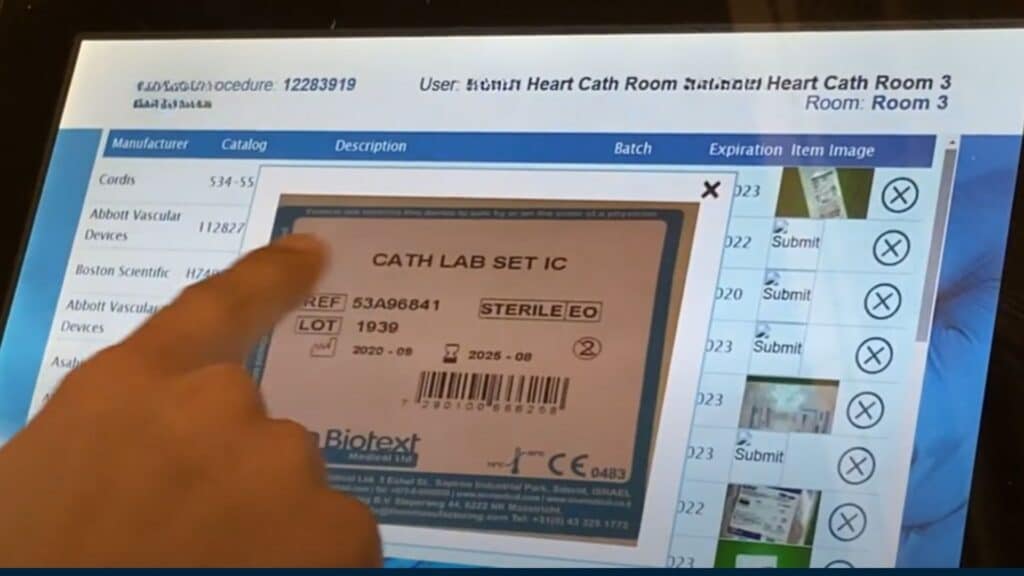Hospital reimbursement is a cornerstone of financial stability in healthcare organizations, and ensuring hospital reimbursement for every legitimate charge is crucial. One of the most impactful areas for improving hospital reimbursement is ensuring the proper documentation and billing of high-cost supplies used in surgeries, particularly through the use of carve outs. Carve outs are provisions that allow hospitals to be reimbursed separately for high-cost items such as implants, devices, and biologic materials that would not otherwise be covered under bundled payments. However, hospitals often struggle with ensuring that these expensive supplies are properly documented and billed. This article explores how hospitals can maximize reimbursement by ensuring these high-cost supplies are captured, categorized, and presented correctly for reimbursement under carve-out provisions.
What Are Carve Outs and How Do They Impact Hospital Reimbursement?
Carve outs in hospital reimbursement refer to specific provisions that allow for the reimbursement of certain high-cost supplies or services separately from standard bundled payments. These items, such as biologic implants, surgical devices, or high-cost drugs, often require more detailed tracking and justification to ensure proper reimbursement. The purpose of carve outs is to ensure that hospitals receive fair compensation and maximize hospital reimbursement for these expensive items, which can otherwise be overlooked or absorbed into broader payment packages.
The Importance of Carve Outs is Evident in the Context of Modern Healthcare
Hospital reimbursement models increasingly rely on bundled payments, such as Diagnosis-Related Groups (DRGs), which are designed to cover a set of services related to a specific diagnosis or procedure. While this approach streamlines billing, it can leave hospitals undercompensated for high-cost supplies used during procedures, such as implants, devices, and other specialty items. Carve outs address this issue by allowing those items to be billed separately, helping hospitals receive adequate reimbursement.
While carve outs are meant to safeguard reimbursement for high-cost items, they also introduce challenges in documentation and coding. Hospitals must ensure that each eligible item is accurately documented, correctly coded, and submitted for reimbursement. Gaps in this process, such as missed charges or coding errors, can lead to billing denials, delayed payment, or significant revenue loss.
Why Are High-Cost Supplies Often Underreported or Misclassified?
The documentation and billing of high-cost supplies is one of the most complex aspects of hospital reimbursement. According to industry reports, a significant percentage of high-cost medical supplies are underreported or misclassified, leading to substantial revenue losses. In fact, approximately 40% of high-cost medical supplies are either underreported or incorrectly categorized within hospitals, resulting in significant gaps in revenue.
These errors typically occur due to the complexity of tracking and managing high-cost items, especially in the operating room (OR), where supplies are often delivered at the last minute and used immediately. Hospitals traditionally rely on barcode scanning or manual data entry to track supplies, but these methods are prone to inaccuracies. In some cases, items are delivered without proper documentation or are categorized incorrectly in the hospital’s inventory system. For example, high-value implants may be used in surgeries but never documented in the system, leaving them out of the billing process.
This problem is compounded by the fact that many hospitals still use outdated systems that require manual intervention. As a result, high-cost supplies such as implants, biologics, and devices often go undocumented, leading to lost revenue and reduced accuracy in hospital reimbursement. The downstream effects of these errors are significant—hospitals may face denials, underpayments, and delays in reimbursement due to incomplete or incorrect documentation.
How Technology Can Address the Carve-Out Challenge
One of the most effective solutions for ensuring high-cost supplies are properly documented and reimbursed is the implementation of AI-powered technology. Automation and real-time tracking systems can significantly improve the accuracy and efficiency of charge capture for high-cost supplies, ensuring that hospitals can bill for every item used in a procedure and secure appropriate hospital reimbursement. A recent survey by Healthcare IT News found that 72% of hospitals using AI-driven systems for charge capture saw significant improvements in accuracy and speed.
AI-powered technologies like Snap&Go are particularly well-suited for managing high-cost supplies in surgical settings. Unlike barcode-based systems, which rely on user compliance and catalog matching, AI-powered systems automatically identify and track every item placed on the sterile field in real-time. These systems capture detailed information about the items used in surgery, including the product name, manufacturer, and cost, ensuring that each item is accounted for and billed appropriately. This technology reduces the risk of human error, eliminates the need for manual entry, and improves the accuracy of charge capture, especially for bill-only supplies.
AI-powered systems also integrate seamlessly with hospital ERPs (Enterprise Resource Planning) and billing systems, transmitting the captured data directly for billing. This integration ensures that high-cost supplies are documented and billed immediately, reducing the time between service delivery and payment. The result is a streamlined revenue cycle process, with fewer billing errors and faster reimbursement.
The Financial Impact of Proper Documentation and Carve-Out Billing
Accurate documentation of high-cost supplies is essential for maximizing hospital reimbursement. Hospitals that properly track and bill for high-cost items can recover significant revenue that would otherwise be lost. For example, a report from the Journal of Healthcare Finance found that hospitals that improved their charge capture for high-cost supplies saw an average increase of 17% in hospital reimbursement rates. Similarly, hospitals using automated charge capture solutions reported a 12% increase in net revenue within the first year, largely due to better tracking of high-cost supplies.
These improvements are particularly crucial in surgical departments, where high-cost supplies such as implants and biologics are frequently used. The financial impact of these supplies is often significant, with some implants costing thousands of dollars per unit. A large hospital may use hundreds of high-cost supplies each month, making the financial stakes high for accurate documentation. According to a report by the American Hospital Association (AHA), high-cost supplies account for 10.5% of a hospital’s budget, totaling over $146.9 billion in 2023. By ensuring these items are documented and billed correctly, hospitals can significantly improve their financial performance.
Furthermore, the risks associated with underreporting or misclassifying high-cost supplies can be substantial. In a 2022 survey, 85% of healthcare finance executives said they struggle with incomplete or inaccurate billing, and 35% reported significant revenue losses due to documentation errors. Automating the charge capture process and ensuring high-cost supplies are accurately tracked can help hospitals avoid these risks and maximize their reimbursement potential.

Best Practices for Maximizing Hospital Reimbursement with Carve Outs
To fully capitalize on the benefits of carve-outs and ensure accurate reimbursement for high-cost supplies, hospitals must implement several best practices. These include:
#1 Real-Time Documentation of High-Cost Supplies
Hospitals should implement real-time documentation processes that ensure high-cost supplies are recorded as soon as they are used. This can be achieved through the use of AI-powered technologies, barcode scanning, or integrated OR inventory systems that automatically capture supply usage during procedures. By documenting supplies in real time, hospitals can reduce the risk of missed charges and ensure timely billing.
#2 Proper Classification of Supplies
It is essential to classify high-cost supplies correctly to ensure they are billed as carve-out items. This includes using the appropriate codes and ensuring that the supplies are categorized separately from standard items. Proper classification helps avoid billing errors and ensures that hospitals receive the full reimbursement they are entitled to. Hospitals should establish clear guidelines for classifying high-cost supplies and provide regular training to staff on the correct procedures.
#3 Automating Billing and Charge Capture
Hospitals should invest in automated billing and charge capture systems that can track high-cost supplies and submit claims without manual intervention. Automated systems can integrate with existing ERP and billing systems to streamline the charge capture process and enhance hospital reimbursement workflows due to accurate and prompt billing. Automation also reduces the risk of human error and improves the overall efficiency of the revenue cycle.
#4 Staff Training and Accountability
Training staff on the importance of accurate documentation and classification of high-cost supplies is crucial. Clinicians, nurses, and billing staff must understand the financial impact of proper documentation and be aware of the procedures for documenting high-cost items. Hospitals should provide regular training sessions and establish accountability measures to ensure that all staff are following best practices for charge capture.
#5 Regular Audits and Reviews
Hospitals should conduct regular audits and reviews of charge capture processes to identify areas where high-cost supplies are being missed or misclassified. These audits should focus on surgical cases where expensive supplies are used, ensuring that every item is documented and billed appropriately. Regular reviews can help identify gaps in the process and provide opportunities for continuous improvement.
Maximizing hospital reimbursement for high-cost supplies through carve-outs is essential for ensuring that hospitals are fairly compensated for the services and items they provide. By implementing best practices for real-time documentation, automated charge capture, proper classification, and staff training, hospitals can significantly improve their reimbursement rates and ensure sustainable hospital reimbursement in an increasingly complex payment environment.






